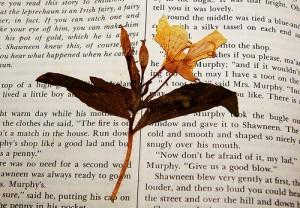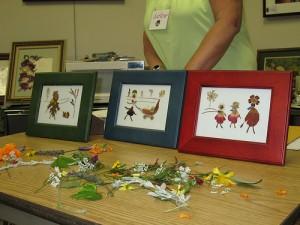
The Popular Art of Pressed Flowers – England Pressed flower art is an ancient method of designing garments and many other objects with dried parts of plants. The popularity of pressed flower art rose to its peak in the 19th century in England. These days, this art form is being pursued by many art enthusiasts, and different kinds of objects are being beautified with pressed flowers.
The Origin
The 19th century botany enthusiasts saw a need to preserve plant specimens and this led to the method of pressing flowers. Soon this was taken up by the women folk, as a hobby and the art grew in popularity. The Japanese art of Oshibana became known to the Europeans as well as to other foreigners after the trade routes were opened. This is how the artistic tradition of pressed flowers came into being in the European countries.
The Art
As the name ‘pressed flowers’ suggests, the petals, leaves, stems and other parts of the plant are pressed to create designs with them. These parts are placed on a ‘flower press’ and are flattened. While pressing the parts, the colours of the parts undergo changes – some parts become dark and some become light. The varying color contrast helps to create a variety of designs.

Pressed flower art can be created on linen, velvet, silk, good quality paper and cotton. To see your art work undamaged for a long time, use high quality material for the work. Pressed flower art is also done on high-quality hand-made paper along with paper marbling art, which uses water colours to create designs.
The Techniques and Uses
Even though various techniques for pressing flowers are used, one of the ancient and common techniques, is to press the flower between the pages of a book. These days, solid presses, having two solid surfaces with soft sheets inside, are available in the market. Screws clamped to the solid surfaces, when tightened, exert pressure, which makes the flower petal dry and flat. Pressed flowers can be used to decorate candle shades, terra cotta flower pots, paper weights, gift tags, watering cans, name tags, photo albums, pencil holders, mirrors, wedding invitations, jewelry boxes, ornaments and almost anything that you want to design.
Tips
While pressing the petals of a Rose flower, try to press each individual petal instead of a bunch of petals. Try to use blotting paper for better absorption of moisture from the flower. Wax papers will not yield good results.

